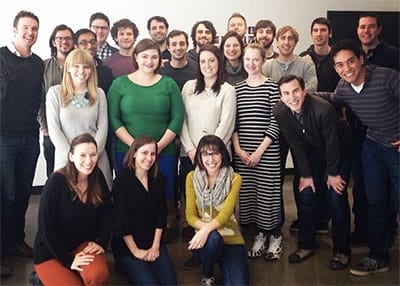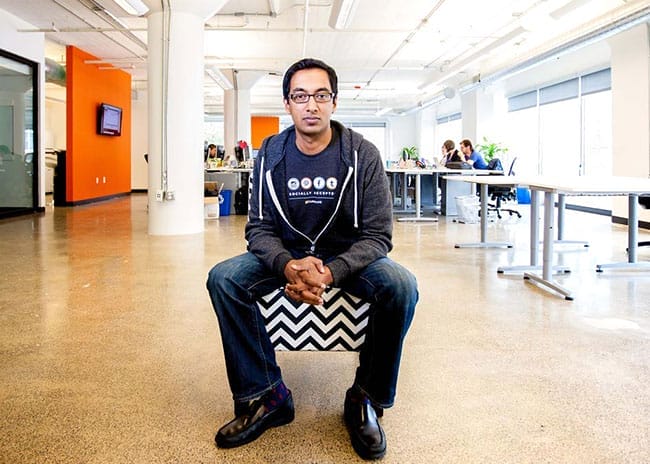For the last three years, Wharton Magazine has spotlighted a number of Wharton startups to watch in its winter issue. We decided to revisit our companies from the 2013 edition—“Startup Enterprise: The Next Generation”—and connected with three of them to see how they are faring and where they are headed.
We’ve publishing our interviews with each as a series over the summer, and this week’s is with Curalate. Founded in 2011 by Apu Gupta, WG’05, and Nick Shiftan, the firm’s grown into a provider of a full suite of brand marketing and sales tools for the visual Web. Last we spoke with them, the Curalate team had 600 brands as clients and was named a top 50 new American company by Business Insider. The firm has far bigger numbers and feats in mind for the future, as you’ll read in the interview transcript below:
WHARTON MAGAZINE: Where does Curalate stand now?
APU GUPTA: Curalate continues to grow rapidly. In May 2014, we completed our Series B financing, raising $8.6 million. Curalate now has 50 employees and operates out of Philadelphia, New York and Seattle. Most recently, Curalate launched its newest product, Like2Buy, which makes Instagram shoppable.
WM: Are you at a comfortable spot with Curalate?
GUPTA: I don’t ever want to be comfortable with this. I am super happy with how the company is growing. … There will be multibillion dollar companies based off of understanding pictures.
WM: Have you had a moment when you realized you were prepared because of Wharton, or something you wish you would have learned more of at Wharton?
GUPTA: I often think about, how does an MBA prepare you for being an entrepreneur? Does it prepare you?
There are some things that don’t prepare you well—that make you more risk averse. The single most defining characteristic of a tech startup is growth. You’re growing something as fast as possible with little or no information, and you’re fundamentally disrupting the market. There are not a lot of comparables. I worried about analysis paralysis as a MBA.

The Curalate team
However, as Curalate has grown and has more data and a greater operating history, some of the fundamentals of my MBA are starting to become much more useful—things like finance and accounting, for instance.
WM: What are the goals for 2014?
GUPTA: Prove that it’s a truly scalable business. Once you do that, the path to becoming a multibillion business is in sight.
WM: You say you aim to, “Prove that it’s a truly scalable business.” How do you actually go out and do that?
GUPTA: To get to scalability, you have to get to repeatability. My focus right now is on running lots of small experiments that we can use to learn from. We want to get to a point where we can say, with reasonable confidence, that for a given input we can produce a given output. If we can get there, it’s just a simple matter of adding more fuel in the tank and stepping on the gas.
WM: What’s the next frontier for visual analytics?
GUPTA: Curalate is enabling brands to drive engagement, traffic and revenue with the hundreds of millions of consumers that elect to communicate in pictures rather than words. The byproduct of our work is a data stream that is rich in consumer insights. We know, for example, not only what products people like but how they prefer to see those products.
Social media signals this rich never existed before, and we believe these signals can be transformative to businesses. Now, you can make smarter decisions about what you buy, how you merchandise, what creative you display in ads and how you display content on your website. If we can get this data used by multiple parts of the organization, Curalate will truly change how social media is perceived by organizations.
Editor’s note: Read our two other update interviews with innovative Wharton startup to watch: with Indian social enterprise Prajwalbharat and school loan provider CommonBond.

























